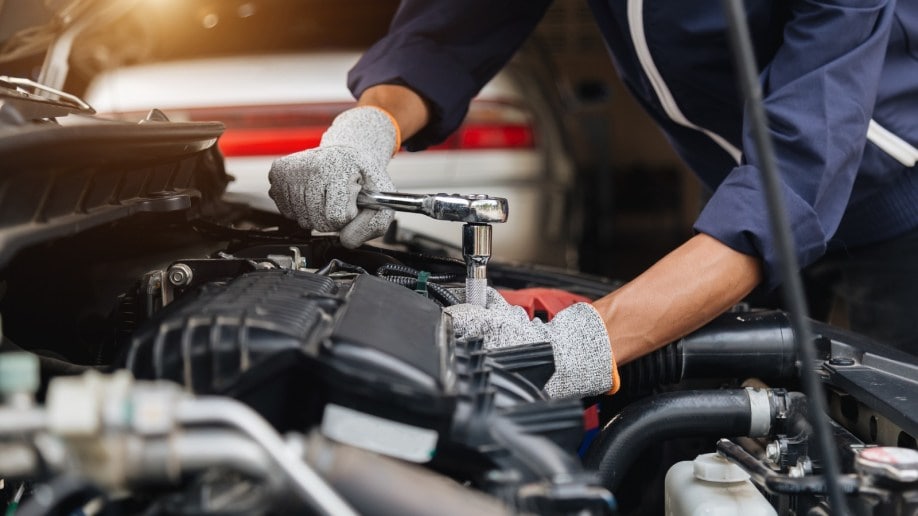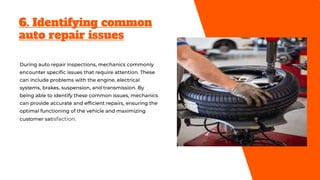Fixing Common Electrical Problems in Cars: A Comprehensive Guide
Having the right tools and knowledge is essential to efficiently address common electrical problems in cars. In this comprehensive guide, we will explore practical solutions to help you troubleshoot and fix issues like dead batteries, faulty alternators, and malfunctioning fuses.
By following these tips, you can save time and money by avoiding unnecessary visits to the mechanic and keeping your vehicle in top condition. From diagnosing the problem to implementing the necessary repairs, arming yourself with the proper information will empower you to tackle electrical issues confidently and effectively.
Let’s delve into the world of car electrical troubleshooting together.

Credit: www.kbb.com
Identifying Electrical Problems In Cars
Identifying electrical problems in cars is crucial for ensuring the proper functioning of the vehicle. From flickering lights to unresponsive power windows, pinpointing the root cause of electrical issues is the first step in resolving them. Here are some common methods for identifying and diagnosing electrical problems in cars.
Checking For Blown Fuses
Blown fuses are a frequent culprit behind electrical malfunctions in cars. To check for blown fuses, refer to the vehicle’s owner’s manual to locate the fuse box. Inspect each fuse visually, looking for a broken filament or a discolored appearance. If a blown fuse is found, replace it with a new one of the same amperage to rectify the issue.
Testing The Battery
Proper battery function is essential for a vehicle’s electrical system. Conduct a visual inspection of the battery for any corrosion, leaks, or damage. Utilize a multimeter to measure the battery’s voltage, ensuring it falls within the manufacturer’s recommended range. If the voltage is below the specified level, the battery may need recharging or replacing.

Credit: www.slideshare.net
Replacing Faulty Components
When it comes to fixing common electrical problems in cars, replacing faulty components is key.
Replacing A Blown Fuse
Locate the fuse box and identify the blown fuse by its darkened metal strip.
- Turn off the ignition and remove the blown fuse using a fuse puller.
- Replace it with a new fuse of the same amperage.
- Ensure the fuse is securely in place before turning on the ignition.
Changing A Dead Battery
Begin by locating the battery under the hood of your car.
- Disconnect the negative (-) terminal first, followed by the positive (+) terminal.
- Remove the old battery and clean the terminals with a wire brush.
- Install the new battery, connecting the positive (+) terminal first, then the negative (-).
Troubleshooting Wiring Issues
When dealing with common electrical problems in cars, wiring issues can be a major culprit. It is essential to be able to troubleshoot wiring problems to ensure the overall electrical system of your vehicle functions properly.
Inspecting Loose Connections
- Check all connections for any signs of looseness
- Tighten all loose connections to prevent unstable electrical flow
Testing For Short Circuits
- Use a multimeter to test for any signs of short circuits
- Identify the problematic area and carefully isolate the short circuit
Repairing Frayed Wiring
- Identify any frayed wiring within the vehicle’s system
- Repair frayed wiring by replacing damaged sections for optimal electrical conductivity

Credit: www.thezebra.com
Dealing With Malfunctioning Switches And Relays
If you’re experiencing electrical issues in your car, malfunctioning switches and relays could be the culprits. These components are crucial for controlling various electrical systems in your vehicle, and when they fail, it can lead to a range of problems. Here’s how you can effectively handle issues related to switches and relays to get your car back on the road.
Examining Switches For Faults
When troubleshooting electrical problems, it’s essential to carefully examine the switches in your car for any faults. Start by inspecting the switch for any signs of damage, such as corrosion, wear, or loose connections. Additionally, check if the switch is receiving power and signal as expected. If you notice any irregularities, it may be time to consider replacing the faulty switch.
Testing And Replacing Relays
Relays play a vital role in controlling electrical circuits, so it’s crucial to test and replace them if necessary. Begin by using a multimeter to check the continuity of the relay’s contacts. If the relay fails the continuity test, it’s likely malfunctioning and needs to be replaced. When selecting a replacement relay, ensure it matches the specifications of the original one to ensure compatibility and proper functionality.
Understanding Alternator Problems
Alternator problems can be a common issue in cars. This comprehensive guide offers valuable insights into fixing electrical problems, ensuring smooth functioning of your vehicle.
Diagnosing A Failing Alternator
If you’ve been experiencing electrical issues in your car, it’s essential to understand the role of the alternator. The alternator is responsible for keeping the battery charged while running the vehicle. When it malfunctions, it can lead to various problems such as dimming lights, a dead battery, and even stalling. To diagnose a failing alternator, follow these simple steps:
- Start by checking the battery voltage using a multimeter. It should read around 12.6 volts when the engine is off.
- Next, start the engine and check the voltage again. It should now read between 13.8 and 14.2 volts.
- If the voltage increases and stays within the acceptable range, the alternator is functioning correctly. However, if the voltage remains low or fluctuates, it’s a clear indication of a failing alternator.
- Another sign of a failing alternator is a squealing noise coming from the engine. This noise occurs when the drive belt slips due to a malfunctioning alternator pulley or a loose belt.
- If you suspect a failing alternator based on these symptoms, it’s best to consult a professional mechanic to confirm the diagnosis.
Replacing The Alternator
Once you’ve diagnosed a failing alternator, it’s time to replace it. While this task may seem daunting, following these steps will ensure a successful replacement:
- Begin by disconnecting the negative battery terminal to prevent any electrical shock or short-circuiting.
- Next, locate the alternator, which is typically attached to the engine block.
- Remove the electrical connections from the alternator, including the wiring harness and any other components attached to it.
- Loosen the mounting bolts that secure the alternator to the engine block and carefully remove it.
- Install the new alternator by reversing the steps above, ensuring all connections are secure and tight.
- Once everything is properly connected, reconnect the negative battery terminal.
- Start the engine and check the battery voltage to ensure it is within the acceptable range.
- If the voltage is now stable, congratulations! You’ve successfully replaced the alternator in your car.
Frequently Asked Questions On Fixing Common Electrical Problems In Cars: A Comprehensive Guide
Can You Fix An Electrical Problem In A Car?
Yes, you can fix electrical problems in a car by checking the fuse, connectors, and wiring. It’s important to identify the issue and use the right tools to resolve it. If you’re unsure, it’s best to consult a professional mechanic for assistance.
What Is The Most Common Electrical Problem In A Car?
The most common electrical problem in a car is a dead battery caused by aging or malfunction.
Are Electrical Problems In Cars Expensive To Fix?
Yes, electrical problems in cars can be expensive to fix due to the complexities involved. Costs vary based on the issue, parts needed, and labor fees.
What Are The 10 Common Electrical Problems And Solutions?
The 10 common electrical problems include faulty outlets, flickering lights, and tripped circuit breakers. Solutions involve checking for loose connections, replacing damaged outlets, and upgrading to LED bulbs. Schedule regular maintenance to prevent electrical issues and always hire a licensed electrician for complex problems.
Conclusion
Resolving electrical issues in a vehicle is essential for smooth functioning and safety. By following the steps outlined in this guide, you can troubleshoot and fix common car electrical problems with ease. Regular maintenance and being mindful of warning signs can prevent future issues, ensuring a reliable and efficient driving experience.

